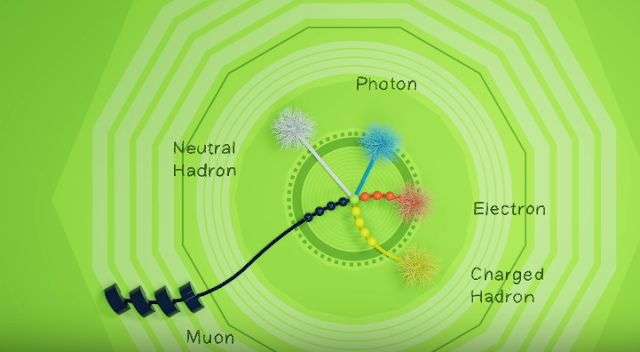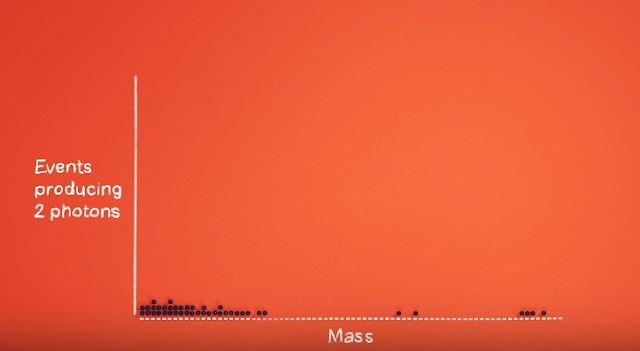Creating Dark matter
Could we ever create dark matter
85% percent of our universe is a mystery. We don't know what it is made of that is why we call it dark matter. But we know that it is out there because we can observe it's gravitational attraction on galaxies and other celestial objects but scientists theorize that we may actually be able to create it in the most powerful particle collider in the world. That's the 27-kilometer long Large Hadron Collider, or LHC, in Geneva, Switzerland. In the LHC, 2 proton beams move on opposite directions and are accelerated to near the speed of light. At 4 collision points, the beams cross and protons smash into each other. Protons are made of much smaller components called quarks and gluons. In most ordinary collisions, the two protons pass through each other without any significant outcome. However, in about one in a million collisions, two components hit each other so violently that most of the collision energy is set free. Producing thousands of new particles. it is only in these collisions that very massive particle, like theorized dark matter, can be produced. the collision points are surrounded by detectors containing about 1 million sensors like huge digital cameras.
These detectors gather information on those new particles, including their trajectory, electrical charge, and energy. Once processed, the computers can depict a collision as an image. Each line is the path of a different particle, and different types of particles are color -coded.
Data from detectors allows scientists to determine what each of these particles is things like protons and electrons. Now detector takes snapshots of about a billion of these collisions per second to find extremely rare massive particles. To add difficulty, the particles we are looking for may be unstable
and decay into more familiar particles before reaching the sensors. Take, for example, the Higgs Boson, a long-theorized particle that wasn't observed until 2012. The odds of a given collision producing a Higgs boson are about one in 10 billion, and it lasts for a tiny fraction of a second. But scientists developed theoretical models to tell them what to look for. For the Higgs, they thought it would decay into two photons.
So they first examined only high-energy events that included only 2 photons.But there is a problem here.There are innumerable particle interactions that can produce two random photons. So how do you separate out the Higgs from everything else? The answer is mass. The information gathered by the detector allows the scientists to go a step back and determine the mass of whatever it was that produced two photons. They put that mass value into a graph and then repeat the process for all events with two photons.
The vast majority of these events are just random photon observations, what scientists call background events.
But when a Higgs boson is produced and decays into two photons, the mass always comes out to be the same. Therefore, the tell-tale sign of the Higgs boson would be a little bump sitting on top of the background. It takes billions of observations before a bump like this can appear, and it's only considered a meaningful result if that bump becomes significantly higher than the background.
In the case of the Higgs boson, the scientists at the LHC announced their groundbreaking result when there was only a one in 3 million chance this bump could have appeared by a statistical fluke. So back to the dark matter. If the LHC's proton beams have enough energy to produce it, that's probably an even rarer occurrence than the Higgs boson. So it takes quadrillions of collisions combined with theoretical models to even start to look. That's what the LHC is currently doing. By generating a mountain of data, we're hoping to find more tiny bumps in graphs that will provide evidence for
yet unknown particles, like dark matter. Or maybe what we'll find won't be dark matter, but something else that would reshape our understanding of how the universe works entirely.
The vast majority of these events are just random photon observations, what scientists call background events.
But when a Higgs boson is produced and decays into two photons, the mass always comes out to be the same. Therefore, the tell-tale sign of the Higgs boson would be a little bump sitting on top of the background. It takes billions of observations before a bump like this can appear, and it's only considered a meaningful result if that bump becomes significantly higher than the background.
In the case of the Higgs boson, the scientists at the LHC announced their groundbreaking result when there was only a one in 3 million chance this bump could have appeared by a statistical fluke. So back to the dark matter. If the LHC's proton beams have enough energy to produce it, that's probably an even rarer occurrence than the Higgs boson. So it takes quadrillions of collisions combined with theoretical models to even start to look. That's what the LHC is currently doing. By generating a mountain of data, we're hoping to find more tiny bumps in graphs that will provide evidence for
yet unknown particles, like dark matter. Or maybe what we'll find won't be dark matter, but something else that would reshape our understanding of how the universe works entirely.









Comments
Post a Comment